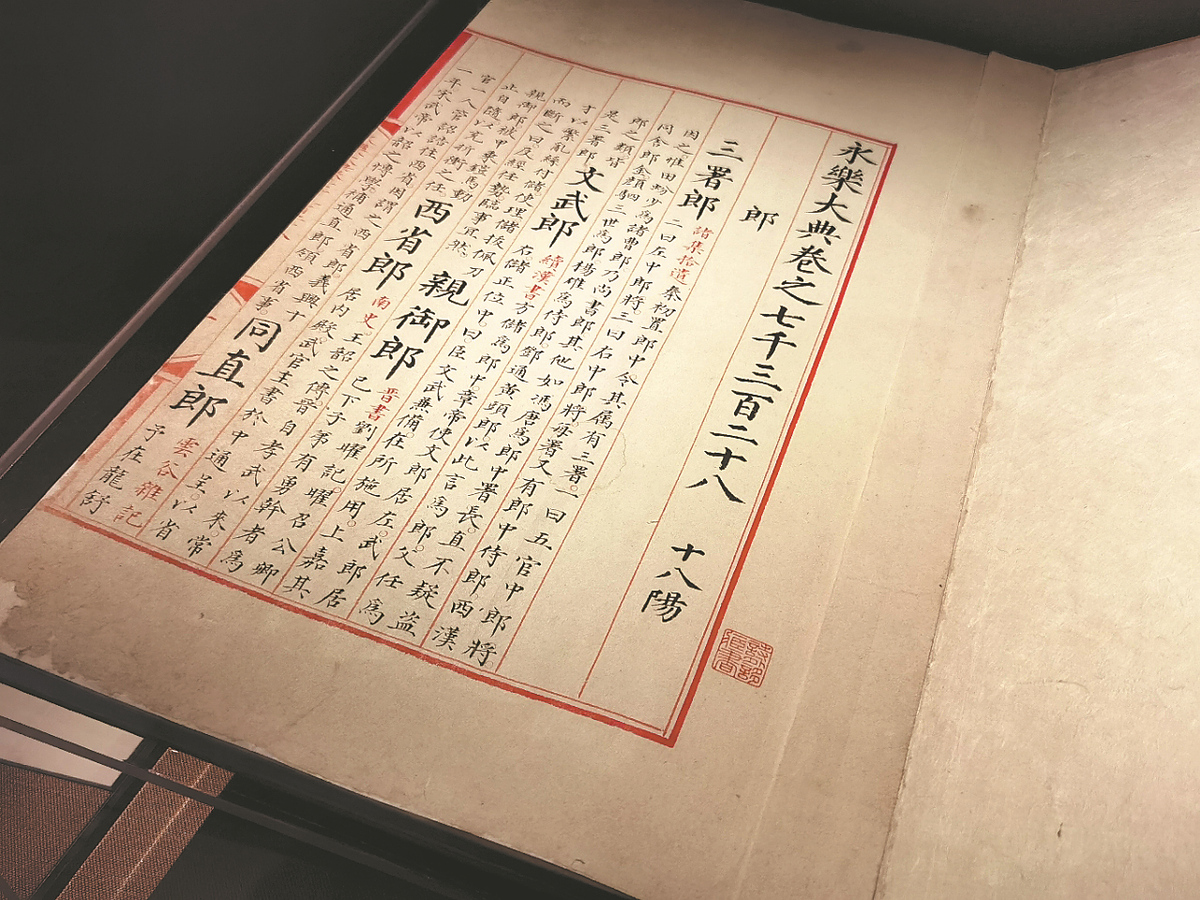Nation sheds more light on its rich past (5)
A copy of Yongle Dadian, the world's largest general encyclopedia made from paper in ancient times. WANG KAIHAO/CHINA DAILY
Documents revitalized
Huangshicheng is not the only place to store records from the Ming and Qing dynasties. Documents were also housed in the imperial cabinet repository and other buildings in the Forbidden City.
Chinese dynasties have a tradition of respecting and guarding archives.
Wu said: "The Taoist philosopher Laozi was responsible for keeping imperial files for the royal family in the Zhou Dynasty (c.11th century-256 BC), after which professional agencies managed the archives. Huangshicheng is the oldest and most complete structure of its kind that still stands today in China."
The idea of storing historical records inside golden cabinets in stone-built structures can be traced to Shiji, or Records of the Grand Historian, the foundation text of Chinese history dating to the 1st century BC.
"The aim was to protect paper-based literature from fire, water and changing temperatures," Wu said.
The First Historical Archives of China are now home to more than 10 million Ming and Qing historical records. Most of them are from the latter dynasty, and they provide a vivid portrait of that era, down to details such as Emperor Qianlong's food and clothing on a specific day, Wu said.
On Feb 15, a display of Ming and Qing historical records — part of exhibitions of "four great discoveries" of the early 20th century from ancient literary artifacts — opened at the National Museum of Classic Books in Beijing, showcasing 123 archival items and related cultural relics.
 |  |
Photos
Related Stories
- Study reveals sustainable agriculture in north China 5,500 yrs ago
- An animated trip through history across the Yangtze River
- Senior CPC official stresses forging brighter future while remembering history
- China urges Japan to reflect on aggression history
- Whistling arrow in Tibet soars through history
- Tracing the footsteps of the CPC over past century
- China continues to promote Party history learning
- Chinese envoy calls for multilateralism on anniversary of end of WWII in Europe
- China remembers September 18 Incident
- Scientists work to uncover the story behind a legendary sword
Copyright © 2023 People's Daily Online. All Rights Reserved.










